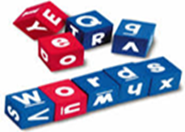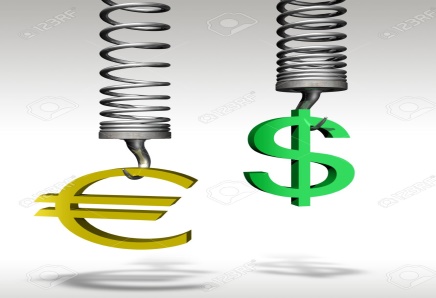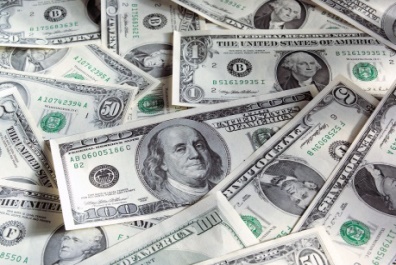Магистры-экономисты. Английский язык english for masters of economics
 Скачать 4.55 Mb. Скачать 4.55 Mb.
|
|
Complete the sentences using the information from Text 1. The name «euro» was officially adopted … The Euro improved economic growth … The design for the euro banknotes has ... Now the euro is the single currency shared by … The euro has been the second most widely held … The Euro has taken away ... The possibility of the euro becoming the first international reserve currency … VOCABULARY PRACTICE Give English equivalents for the following words and word combinations from Text 1. Единая валюта; гражданин; страна с развитой экономикой; размер процентной ставки; денежная купюра; монетный двор; важный; внедрять; нестабильность; обменный курс валют; развивающаяся экономика; вводить в обращение; предложение; экономическое развитие; слияние; миллиард; прекращать; экономическое развитие; укреплять; местное правительство; колыбель; монета. Fill in the table of derivatives paying attention on word formation. Make up sentences. 
Give your explanation of the terms. e banknote; fiscal policy; m currency; denomination. Insert the prepositions. The euro is the official currency ___ the eurozone. The euro was introduced ___ world financial markets as an accounting currency ___ 1 January 1999. The euro is the sole currency ___ 19 EU member states: Austria, Belgium, Cyprus, Estonia, Finland, France, Germany, Greece, Ireland, Italy, Latvia, Lithuania, Luxembourg, Malta, the Netherlands, Portugal, Slovakia, Slovenia, and Spain. One of the advantages ___ the adoption of a common currency is the reduction of the risk associated ___ changes in currency exchange rates. The introduction of the euro seems to have had a strong effect ___ European financial integration. A study suggests that the introduction of the euro has had a positive effect ___ the amount of tourist travel ___ the Europe. The euro is the second-most widely held reserve currency ___ the U.S. dollar. The Euro is commonly represented ___ its currency code (EUR) and in its symbol form (€). Three sentences have been removed from the text. Chose from the sentences A-D the one which fits each gap (1-3). There is one extra sentence. Give the main idea of the text. Commentators have also started looking for clues about the future of the euro in U.S. history. The comparison is an example of how far the euro has ventured into uncharted waters. Both the U.S. Federal Reserve Bank (the Fed) and the European Central Bank (ECB) have federal structures, consisting of a central bank and numerous regional banks. This might not be a truly equal comparison as the global financial markets are much more integrated than 160 years ago and react very vigorously.  1 When the euro was created there was plenty of talk comparing it to the U.S. dollar. For instance, the Eurozone and the U.S. have similar sized economies and population, and the two currencies are governed by similar institutions.  2 T  he current Euro Financial Crisis has caused economists to return to examining what the Eurozone can learn from the U.S. dollar. Many European leaders argue that the Eurozone, and maybe the EU, need a more unified fiscal policy to complement the unified monetary policy of the euro. The American lesson being that the dollar’s success has rested on a large federal government being able to set uniform fiscal policies for the entire currency area. he current Euro Financial Crisis has caused economists to return to examining what the Eurozone can learn from the U.S. dollar. Many European leaders argue that the Eurozone, and maybe the EU, need a more unified fiscal policy to complement the unified monetary policy of the euro. The American lesson being that the dollar’s success has rested on a large federal government being able to set uniform fiscal policies for the entire currency area.  3 The director of the Centre for European Policy Studies recently dipped into American economic history to examine the fate of the euro. In “Learning from the US experience?”, Daniel Gros sees similarities between the new U.S. Federal Government’s decision to buy the debt of the 13 original states in 1790 with the EU’s decision to have the ECB buy member state’s bonds. Mr. Gros then argues that when the Federal Government decided not to bailout American states in the 1840s and allowed nine to go bankrupt, no contagion ensued. Since these nine states accounted for a quarter of the American population at the time, it would be approximately equivalent to Greece, Ireland, Portugal, and Spain to all default. https://iuwest.wordpress.com TEXT 2 US DOLLAR T  he history of the United States Dollar refers to more than 200 years since the Continental Congress of the United States authorized the issuance of the US dollar September 8, 1786. The term 'dollar' had already been in common usage since the colonial period when it referred to eight-real coin (Spanish dollar) used by the Spanish throughout New Spain. After several monetary systems were proposed for the early republic, the dollar was approved by Congress to be released in a variety of denominated coins and currency bills. he history of the United States Dollar refers to more than 200 years since the Continental Congress of the United States authorized the issuance of the US dollar September 8, 1786. The term 'dollar' had already been in common usage since the colonial period when it referred to eight-real coin (Spanish dollar) used by the Spanish throughout New Spain. After several monetary systems were proposed for the early republic, the dollar was approved by Congress to be released in a variety of denominated coins and currency bills.Now the US dollar is the official currency of the United States of America and is also used in a number of other countries outside the US. The American one dollar bill has a picture of George Washington. There are currently paper bills of 1, 2, 5, 10, 20, 50 and 100 dollars. All US dollar currency has been the same size since 1928, unlike some countries where different value notes have different sizes. The U.S. also has dollar coins. Some are silver colored and some are gold colored. There are 100 cents in one dollar. The cent or «penny» is the smallest coin used in the U.S. All coins and paper bills have the faces of famous Americans on the front side. US dollar is used as a reserve currency, the more «marketable» money internationally, that means that most countries will accept it in payment. For example, if Canada buys goods from China, China may prefer to be paid in US dollars rather than Canadian dollars. US dollar became a reserve currency at the end of the forties. World War II devastated European and Asian economies while leaving the United States' economy relatively unharmed. As European governments exhausted their gold reserves and borrowed to pay the United States for war material, the United States accumulated large gold reserves. This combination gave the United States significant political and economic power following the war. The United States enjoys many benefits because the dollar serves as the international reserve currency. The United States could not face a balance of payments crisis as American debts are denominated in dollars, thus the Federal Reserve could simply print more dollars. In other words, the United States cannot suffer a debt crisis, but would instead face an inflation crisis. The cost of producing a dollar to the United States is simply the cost of printing the note, whereas a foreign government must provide a dollar’s worth of goods for that dollar; the difference between these two values is called seigniorage and its benefits go directly to the American government. Further, the United States dollar's position in the world allows the American federal government to borrow money at exceptionally low interests rates due to high demand for the dollar. This phenomenon is generally called «exorbitant privilege» and allows the United States to run a balance of payments deficit «without tears», as French economist Jacque Rueff said. The foundation from which the term «reserve currency» originated no longer exists. Originally, the term «reserve» referred to the promise that the currency was backed by and could be redeemed for a commodity, usually gold, at a promised exchange ratio. The first truly global reserve currency was the British pound sterling. Because the Pound was «good as gold», many countries found it more convenient to hold pounds rather than gold itself during the age of the gold standard. The world’s great trading nations settled their trade in gold, but they might accept pounds rather than gold, with the confidence that the Bank of England would hand over the gold at a fixed exchange rate upon presentment. After the War when the US accumulated the lion’s share of the world’s gold and dollar became the «reserve currency» too. There are two characteristics of a currency that make it useful in international trade: one, it is issued by a large trading nation itself, and, two, the currency holds its value over time. https://simple.wikipedia.org/wiki/United_States_dollar https://mises.org/library/why-it-matters-if-dollar-reserve-currency TEXT COMPREHENTION  Answer the questions. When did the history of US dollar start? What is a reserve currency? What was the first reserve currency? When and why did the US dollar become a reserve currency? What benefits does the USA enjoy because the dollar serves as the international reserve currency? What is the cost of producing a dollar to the United States? What is seigniorage? What are the characteristics of a currency that make it useful in international trade? 8. Match the English words with their Russian equivalents.   выпускать billion    товар exorbitant   изменчивость volatility   миллиард release   укреплять strengthen   чрезмерный commodity   currency обещание   promise валюта 9. Fill in the gaps in the sentences using these words. In British English, a _____ used to be equivalent to a million million, while in American English it has always equated to a thousand million. British English has now adopted the American figure. In finance, _____ is the degree of variation of a trading price series over time as measured by the standard deviation of returns. A _____ refers to money in any form. The definition of _____ is something that is excessive or goes beyond reasonable. In economics, a _____ is a fungible marketable item produced to satisfy wants or needs. A _____ represents the eventual result of an asynchronous operation. 10. Chose the corresponding Russian word. 1. excessive a. несерьезный b. чрезмерный с. правдивый 2. denominate a. обозначать b. деноминировать c. нарушать 3. interest a. налог b. спрос с. процент 4. issuance a. страховка b. выпуск с. преграда 5. borrow a. занимать b. давать в долг с. продлевать 6. exist a. существовать b. гарантировать с. прекращать 7. rate a. ассортимент b. тренд c. ставка  For decades, the dollar has been … In the present world nations are not able to work together closely … A world currency might … Some of the world's currencies ... A world or global currency is one that … The relative strength of the U.S. economy means that … More than one-third of the world's output, as measured by Gross Domestic Product … Match the beginnings and the endings of the sentences.   a. … are still pegged against the dollar. b. … undermine national sovereignty of smaller states. c. … its currency, the dollar, is the most powerful in the world. d. … the world's most widely used currency. e. … comes from countries that have pegged their currencies to the dollar. f. … is accepted for all trade throughout the world. g. … enough to be able to produce and support a common currency. Make up as many word-combinations with the word money as you can.    Tax     Money     Put the words given below into the right order to make up a sentence. currencies / an / Some / reserves / investment / governments / of their / purchase / foreign / as. is / no / However / currency / official / there / global. U.S. / involves / of / More / than / trading / 85% / forex / the / dollar. a lot of / business / require / dollars / Foreign / to / banks /dollars / conduct. currency / becoming / euro / of / The / slimmer / chance / the / grows / a / world. single / In / world / suggested / March / global / 2009 / the / China / currency / and / Russia adopt / a. national / support / Reserve / in order / currency / value / the / to / is held / currencies / of. |
